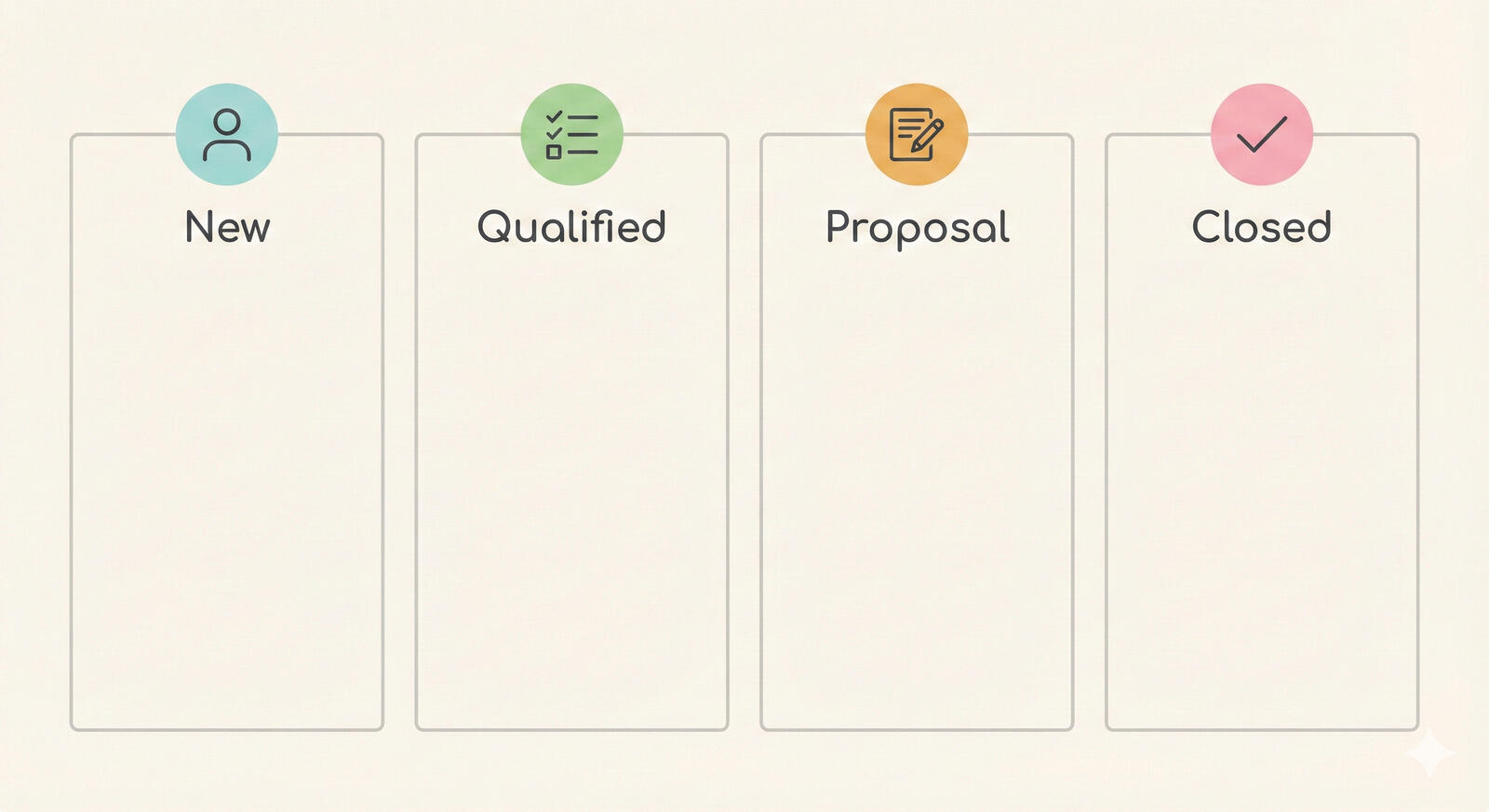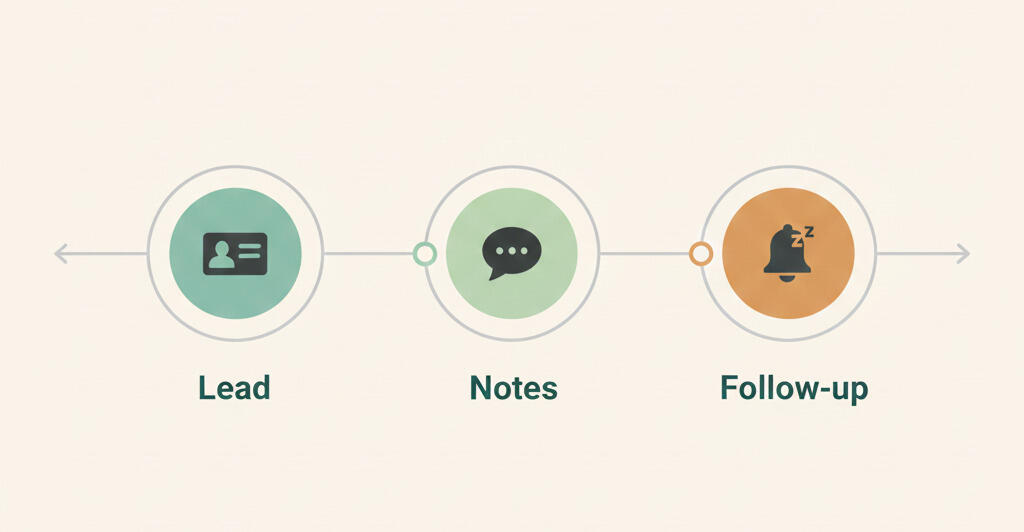How to write a simple and effective project plan
Contents
- What is a project plan?
- Components of a project plan
- How to create a simple project plan (step-by-step guide)
- Project plan example: Marketing campaign (built in Breeze)
- Should you use project plan templates?
- Best practices for writing a good project plan
- Why you need project management software
- Create your next project plan with Breeze
Planning a project can feel overwhelming, especially if you're not a full-time project manager. But you don't need complicated software, fancy charts, or a technical background to create a solid project plan.
A good project plan helps your team stay organized, meet deadlines, and avoid scope creep. It clarifies measurable goals, timelines, responsibilities, and deliverables. More importantly, it gets everyone on the same page before work begins.

With Breeze, your project management doesn't live in a static doc. It evolves with your team and adapts as your project needs change. You can create a work plan, monitor the overall project timeline, and update the team from one clean dashboard.
In this guide, you'll learn how to write a simple project plan that actually works. We'll cover the key steps, common mistakes, and how to keep things moving without the stress.
What is a project plan?
A project plan is more than a to-do list. It is the foundation of successful project management. It outlines how your team will move from idea to completion, including the goals, timeline, scope, and key deliverables.
A clear, simple project plan gives your team a shared direction and helps you stay on track throughout the entire project. It shows what needs to be done, who's doing it, and when each piece is due. It also acts as a reference point when priorities shift or challenges come up.
An effective project plan answers questions like:
- What are the project objectives?
- What specific activities and tasks need to be completed?
- Who's responsible for each deliverable?
- What's the overall project timeline?
Whether you're building a work plan from scratch or improving how your project team collaborates, getting these basics right sets the tone for everything that follows.
Components of a project plan
A good plan covers the basics without getting too detailed. Whether you're managing a small project or a big one, here are the must-haves for every plan:
- Project scope – What's in (and what's out)? Define your project so the team and stakeholders know what to expect.
- Project timeline – When does it happen? Map out phases, deadlines and dependencies to keep your project on track.
- Project deliverables – What are you creating or completing? List the final outcomes or outputs your team is responsible for.
- Roles and responsibilities – Who does what? Assign tasks to team members and who's accountable for each part of the project.
- Project budget – How much will it cost? Estimate resources, tools, people and any other expenses to keep the project within budget.
- Risk management plan – What could go wrong and how will you handle it? Identify potential risks and outline a plan to deal with them before they derail progress.
- Communication plan – How will your project team and stakeholders be informed? Decide how often updates will be shared, in what format and who needs to be looped in.
These will give structure to your work plan and help you track progress from start to finish. Omit any of these and you'll end up with confusion, delays or missed goals, especially in teams where people are managing multiple priorities.
How to create a simple project plan (step-by-step guide)

A simple project plan helps your team focus on what matters. It cuts out the noise and gives everyone a clear path forward. When the basics are in place, your team can spend more time executing and less time figuring out who's doing what, when, and how.
Here's how to create a project plan that keeps things moving without getting bogged down.
Step 1: Define the project scope, goals, and objectives
Start by defining the scope of the project. What's included? What's not? Be specific, especially if you're working with external clients or teams. Then write down the key project objectives. These should line up with business goals and give everyone a shared understanding of success. This is also the time to list any risks, dependencies, or limitations that could impact delivery.
In Breeze project boards, you can map out your scope visually so that it stays front and center for the whole team.
Step 2: Map out the main tasks and deliverables
Break the project into major phases or milestones. Under each one, list out the project deliverables that need to be completed. You don't need every detail yet, just the big blocks of work that define the project.
Use task lists in Breeze to create milestones and break them into actionable steps.
Step 3: Build your project schedule
Assign dates to each task and deliverable. Keep it realistic. If a phase depends on something else being finished first, note that. A clear project schedule helps your team manage time and adjust quickly if something shifts.
Breeze lets you drag and drop tasks to adjust timelines and see how delays might affect other work.
Step 4: Assign work to the project team
Now that you have the deliverables and dates in place, assign them to specific people. Make sure workloads are balanced and that every task has an owner. You can add watchers too, so people stay informed without being directly responsible.
In Breeze, you can view and manage team workloads and reassign tasks if someone is overloaded.
Step 5: Create checklists for each milestone
To avoid missed steps or last-minute surprises, create checklists for each key deliverable. Think of it as a lightweight quality control step. This makes it easier for your team to review their work before marking anything as done.
Breeze supports task-level checklists that make this easy to manage without cluttering your board.
5. Tie everything to deliverables and outcomes
By the end of the project, these deliverables are moved to Done:
- Newsletters sent
- Thank-you notes finalized
- Follow-up calls logged
- Blog content published and reviewed
You can set up project statuses so each item is clearly marked "Done" on the board, giving the whole team and any stakeholders a clean end-state they can verify.
Why this works
This is a live, flexible project plan built right into your team's workflow. You can:
- Plan in phases
- Assign clearly
- Track work in real time
- Collaborate without chasing updates
- Deliver results that are visible and organized
No one's stuck in spreadsheets. Everyone stays aligned. And when the project wraps, you've got a clean audit trail of what got done, when, and by whom.
Should you use project plan templates?

Once you're clear on the components of a project plan, it's tempting to grab a free project plan template from Excel, Word, or even reuse one from a previous project. It feels like a quick win. But before you download a generic planning template, consider whether it fits your project scope, team structure, and timeline.
A project plan template can be helpful, especially for a simple project with predictable steps. It gives you a head start, saves time, and helps you outline key items like project deliverables, communication plans, or the overall project schedule. For smaller teams or repeatable tasks, a template might be enough to write a project plan that works.
But if you're creating a detailed project plan for cross-functional teams, managing a tight project budget, or working with evolving project needs, templates often fall short. They lack flexibility, real-time updates, and collaboration tools that modern project management software offers. You'll often end up spending more time adapting the template than it would take to build a tailored project management plan from scratch.
Best practices for writing a good project plan
A good project plan starts with clarity. Before diving into tools or timelines, make sure the project goals are defined and agreed on. This helps your project team understand what success looks like and how their work connects to the bigger picture. From there, focus on outlining the project scope so everyone knows what's included and what's not. That kind of clarity prevents scope creep and misaligned expectations later.
Strong communication also plays a big role. Instead of waiting until something goes wrong, establish a communication plan early. Decide how updates will be shared, how often, and who needs to be kept in the loop. This reduces back-and-forth and helps stakeholders stay engaged throughout the entire project.
It also helps to plan for the unexpected. Give your project schedule some breathing room by adding buffer time around key deadlines. Things will change, and your project management plan should leave space for that. Overly rigid plans tend to break. Agile projects and teams that check in regularly are often better equipped to adapt and move forward without delays.
Lastly, don't overthink the structure. A detailed project plan doesn't need to be a complex document. Keep it simple and actionable, especially for teams juggling multiple priorities.
The goal is progress, not perfection.
Why you need project management software
If you've tried managing a project in spreadsheets or shared docs, you've probably run into version issues, missed deadlines, or unclear ownership. A project plan template can help with simple, repeatable projects. But when things get more dynamic, you need something more capable.
This is where project management software like Breeze makes a difference. It gives you a centralized, flexible space to:
- Create your own project plan
- Define your project scope and tasks
- Assign work and set project timelines
- Track project progress in real time
- Communicate clearly with your team
Instead of bouncing between email, docs, and chat, Breeze keeps everything in one place. It's built for non-technical teams, so you don't need to be a project management professional to use it. Whether you're running a simple project or coordinating cross-functional teams, Breeze helps you move faster while staying organized.
Create your next project plan with Breeze
Breeze is built to make project planning easier, not harder. You can map out your entire project from the kickoff to delivery without getting stuck in the weeds. The platform supports everything you need: visual project boards, collaborative checklists, flexible timelines, and role assignments that actually stick.
Switch to Breeze and experience the ease of writing project plans and managing them. With a friendly interface and useful components, Breeze can make project planning seem like a breeze.








